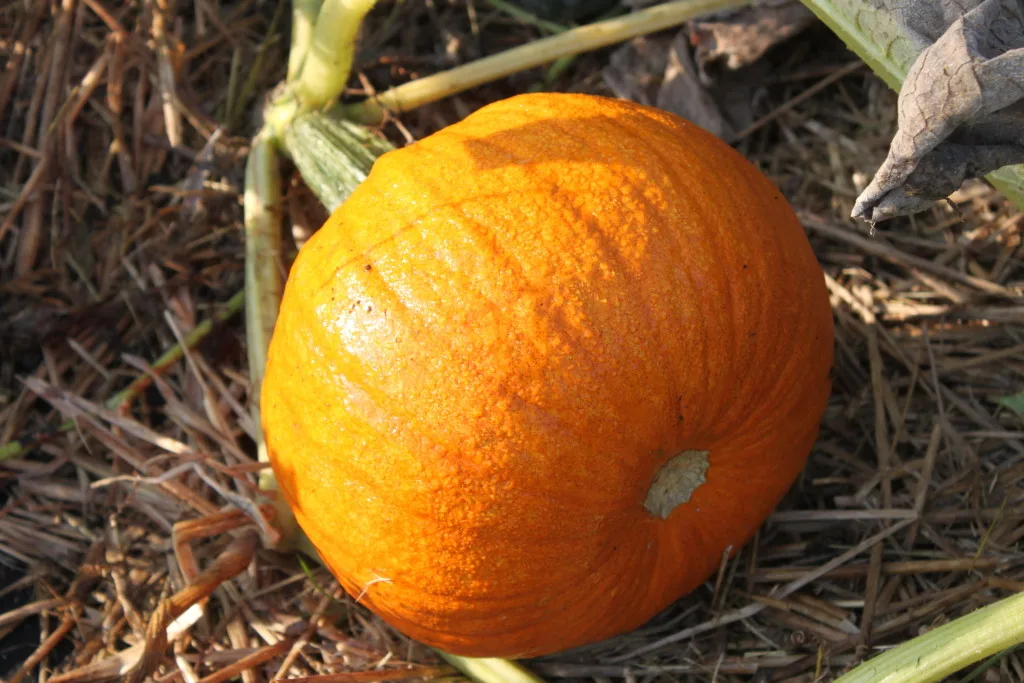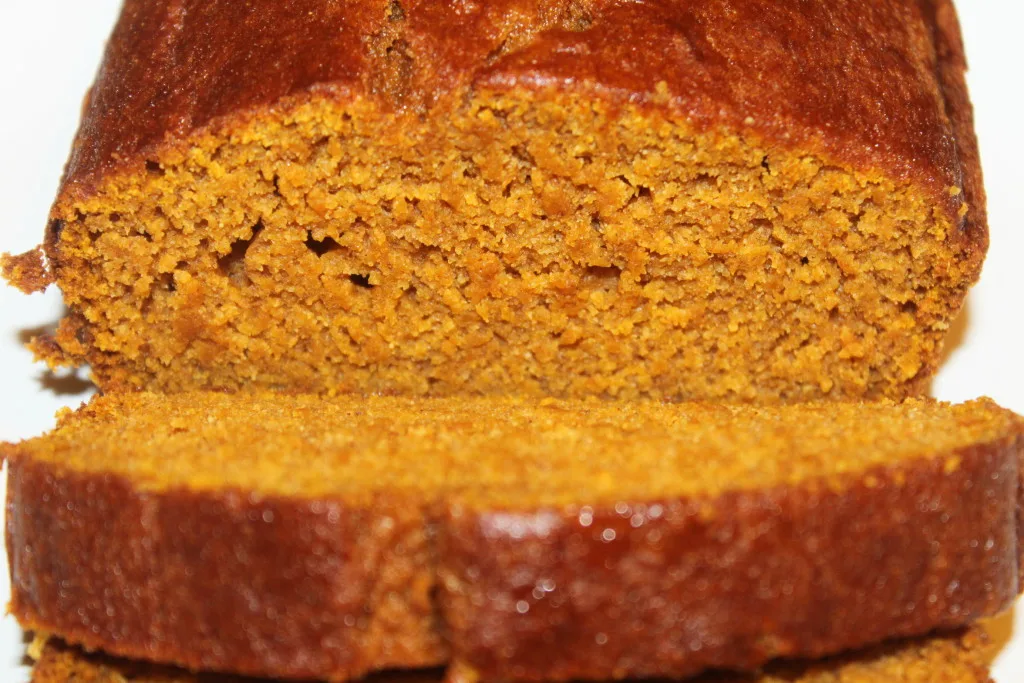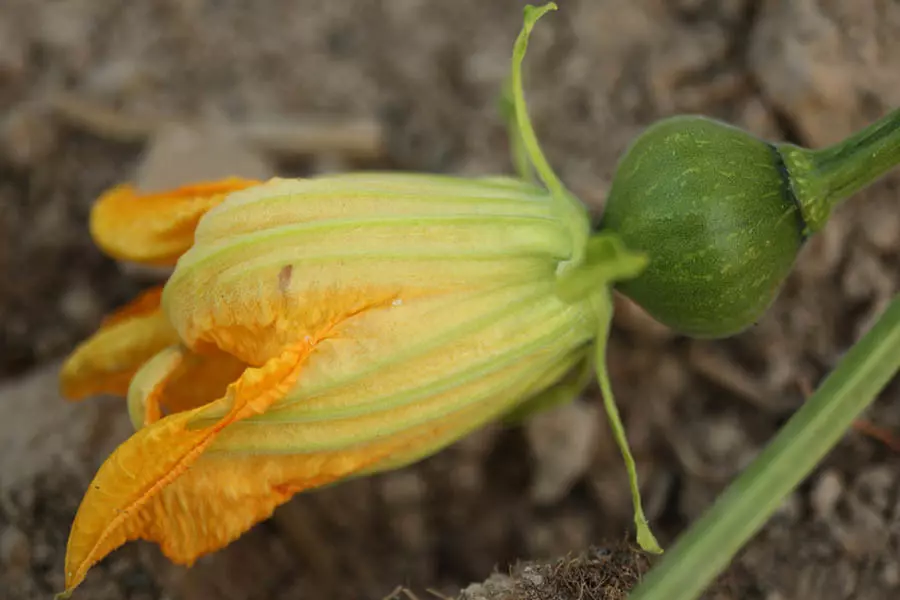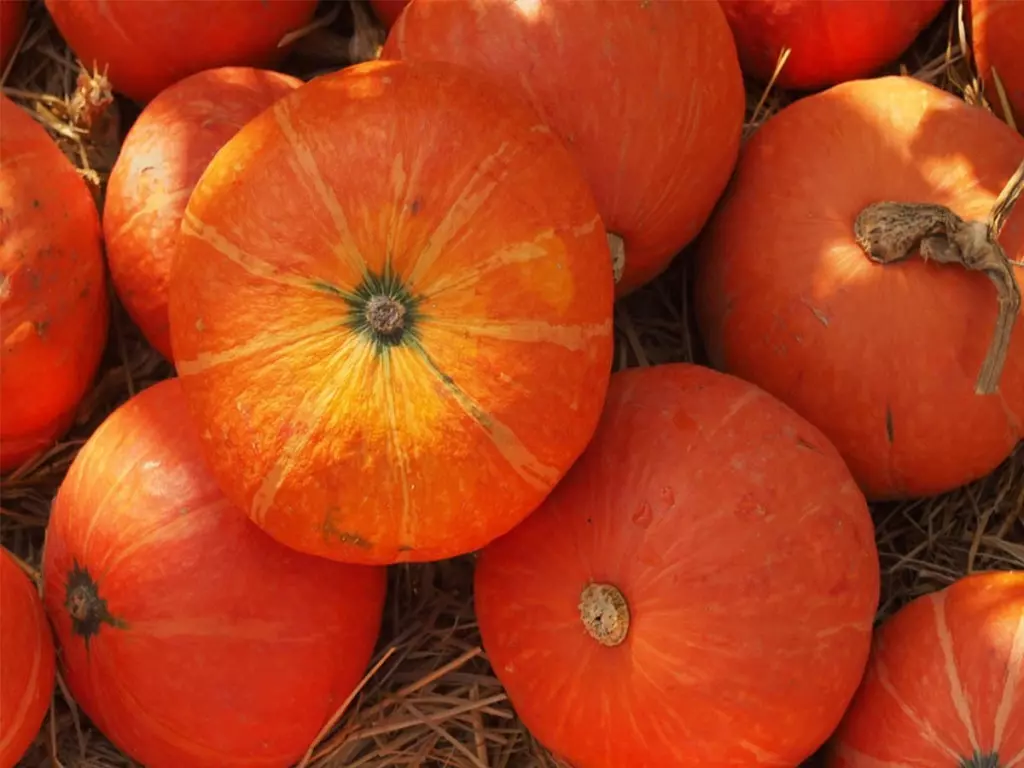There is just something special about growing pumpkins! The tips and tricks to successful growing are the same – whether you want to grow a few pie pumpkins for delicious pies, rolls or donuts, or large ones worthy of a county fair blue ribbon.
Beyond starting with a good quality seed, growing great pumpkins requires good sunshine, good soil, and lots of water. Provide those three in the right amounts, and you can be a rock star when it comes to growing pumpkins!
Seed links For 3 Sizes To Grow : New England Pie Pumpkin , Pumkpin Cargo (jack-o-lantern pumpkins), Atlantic Giant Pumpkins – The Big Ones!
3 Big Keys To Growing Pumpkins
#1 Location, Location, Location!
It all starts with location, and pumpkins love the sun! Be sure to locate your pumpkin vines in the sunniest portion of your garden or yard. Full sunlight has several big benefits when it comes to growing healthy and productive pumpkin vines.
First, the vines need the sunlight to get their growing cycle off to a great start. Like most plants, pumpkins rely on photosynthesis to grow strong and big, so proper sunlight is a key.
Secondly, by locating them in a sunny location, leaves and vines can dry off earlier from the morning dew. Pumpkins, like most vining crops, are notorious for falling victim to blight, mildew, and mold issues. Drying off leaves early each day goes a long way in preventing such diseases from taking hold.
Last but not least, pumpkins need the sun in the fall to ripen into the beautiful orange globes we all know and love! So start your plants off right by placing them in the sun!
#2 Planting Pumpkin Seeds – Proper Soil And Hills
Pumpkins require fertile, warm and well-drained soil to reach their maximum potential. Prior to planting, mix in generous amounts of compost or aged cow or chicken manure with the existing soil. This will give the seeds and resulting seedlings and vines the power they need to grow.
Finished compost is a great choice, because its PH is right at or near neutral, perfect for growing pumpkins. Many top competition pumpkin growers swear by the aged manure tip as well, mixing it into the planting soil as well to provide a boost as the plants grow.
When plant your seeds or transplants, create a small tapered hill for them that sits above the rest of your garden plot. How big? An 18″ diameter mound about 2″ to 3″ above the existing soil line will work just fine. This is another aid in helping them to dry off earlier each morning, and to not become waterlogged when too much rain falls. And last, wait until the soil has warmed before planting seeds or transplants. Most professional growers will tell you to wait until the outside temps regularly begin to reach about 70 degrees each day before planting.
#3 Pumpkins Need Water – And Lots Of It!
Pumpkins require a lot of water to grow to their full potential. When growing pumpkins such as pie and market pumpkins, they should receive about 2 to three gallons of water a couple of times per week. If you are growing larger varieties, may want to double to help them reach their full potential. Some champion growers give nearly 20 gallons two or three times a week to their massive pumpkins to get them ready for competitions! That’s not quite necessary for backyard growers, but proper watering is a must.
When watering, water right at the plants base and avoid spraying the leaves as much as possible. This helps keep the leaves dry and prevent mold and mildew.
To help avoid soil-borne diseases and depleted resources, practice good crop rotation. Pumpkins should not be grown in the same soil for at least 3 to 4 years to help the soil recover and keep soil-borne disease at bay.
As a final interesting note, believe it or not, your pumpkins will grow mostly in the cooler and less stressful overnight periods. Pumpkins are amazing nighttime growers, sometimes growing an inch or two in circumference in a single night!
Happy Pumpkin Growing – Jim and Mary! We hope you enjoyed this week’s gardening article! If you would like to receive our DIY, Gardening and Recipe articles each week, you can sign up to follow the blog via email in the right hand column above, “Like” us on Facebook, or follow us on Twitter. This article may contain affiliate links.




